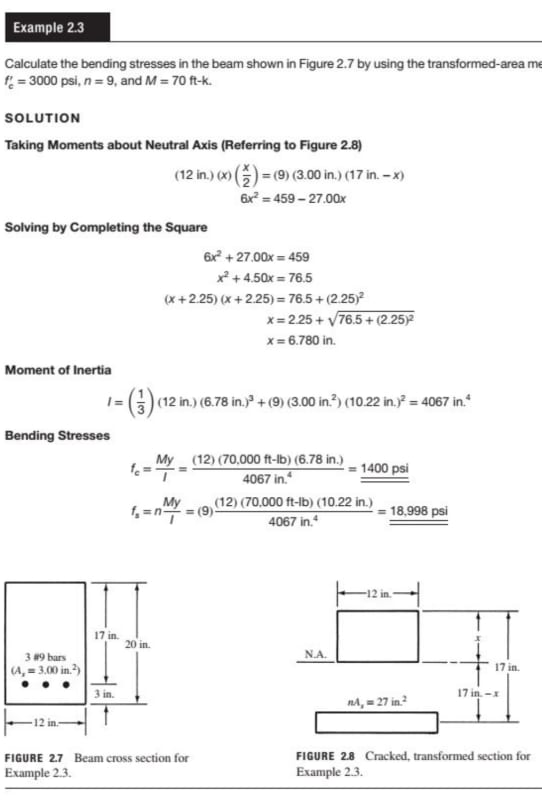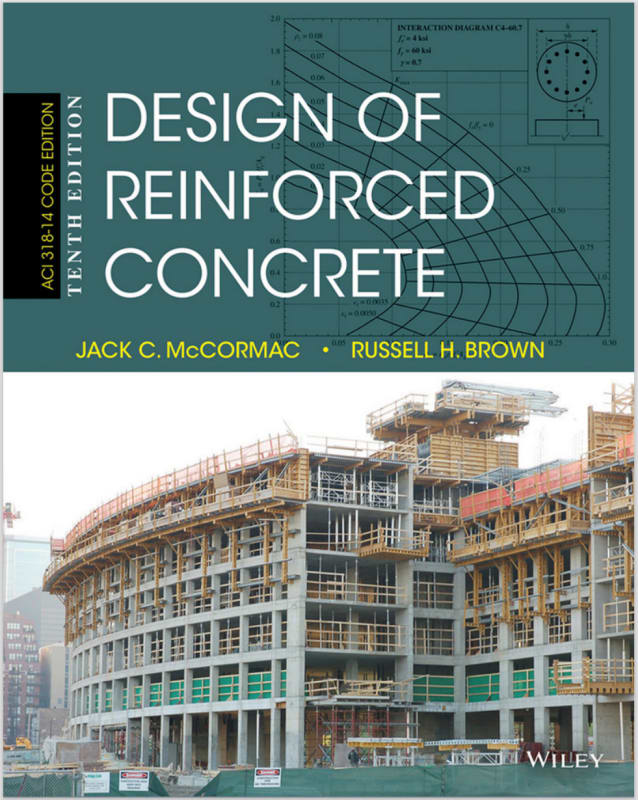Is there a term/phrase or discussion by ACI to account for the fact that these two things are not equivalent (at least not equivalent when I calculate them).
•Calculating the depth to the neutral axis by taking moments about the N.A. of a cracked beam with transformed sections
•Using the stress equations where neutral axis is c = a/β1
Values are close but they differ. Anybody else ever get tripped up by this? I expect it's to do with the first method being a true calculation by transformed areas. While the second method is the conversion of a non uniform curve into an equivalent uniform stress via a single factor (β1) and 0.85f'c.
I recall seeing the transformed sections in text books, but I don't think it was specified in ACI. I'm not hung up on it... I just figured this is the perfect place to talk about the couple % difference.
•Calculating the depth to the neutral axis by taking moments about the N.A. of a cracked beam with transformed sections
•Using the stress equations where neutral axis is c = a/β1
Values are close but they differ. Anybody else ever get tripped up by this? I expect it's to do with the first method being a true calculation by transformed areas. While the second method is the conversion of a non uniform curve into an equivalent uniform stress via a single factor (β1) and 0.85f'c.
I recall seeing the transformed sections in text books, but I don't think it was specified in ACI. I'm not hung up on it... I just figured this is the perfect place to talk about the couple % difference.


